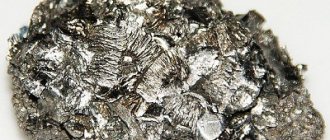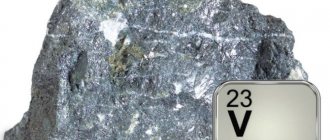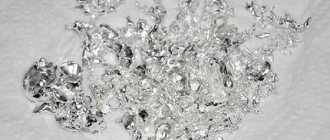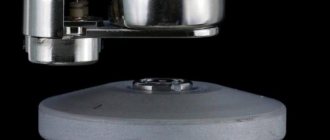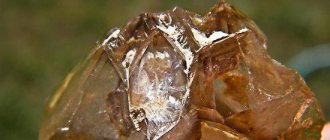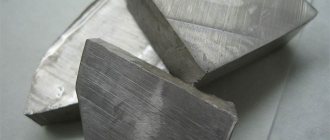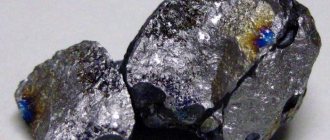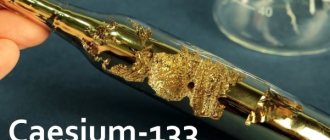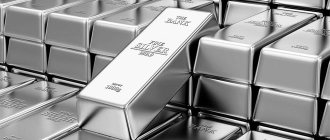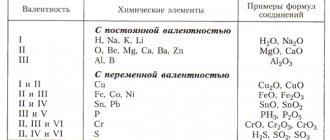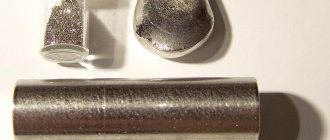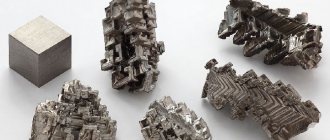Basalt is a stone. Basalt is a hard stone - this is exactly what it may seem like to an outsider who has visited Sikachi-Alyan for the first time, looking at the famous petroglyph paintings depicted on huge boulders.
But having studied the issue quite a bit, it turned out that basalt can be very different. There is, among other things, basalt tuff - which is not so hard. Back in 2012, I personally carried out an experiment about drawing one of the stones located far from the complex itself. I managed to use a slightly pointed piece of stone to make a groove on the boulder about 1 cm wide and half a centimeter deep in just a couple of minutes! And this is the famous hardness of basalt? Yes, there are very strong representatives of it on the shore, but they are a minority. And it turns out that the legend that the stones “were once soft” is unfounded. After all, the stones are soft even now!
I remember I wandered among them for a long time, not understanding where the strange stripes on the tops of the cobblestones came from, as if they had been cut with grinders in various directions, or boards had been sawed onto them. Everything turned out to be simple and became clear when it turned out that the stones were soft. It’s just that local fishermen often tie their boats with thick metal wire, which, when the water is significantly rough, constantly rubs against the stone, eventually rubbing it and creating grooves. Simple wire!
It turns out that any fisherman of the past, sitting on the shore for a long time, could hollow out the larvae of Sikachi-Alyan, one after another - simply out of boredom, with nothing to do. Perhaps the understanding that the basalt stone on the bank of the Amur is not at all hard was the first unusual result of the research. But that’s not what the article is about...
Previously, we have already published a photograph of a stone found there, in Sikachi-Alyan, on which an unusual mark remained, as if fingers had been run over it, if the boulder had been soft, or perhaps several times with a stick. There is nothing like this specimen in the area.
This created a mystery. I can’t say that I was very eager to solve it, but I wondered if the stone could really be soft? And so, after some time, the second, downright shock awaited me, when at first the word “Basalite” (thermal insulator made of basalt) began to hurt my ears - and after investigation I suddenly found out that the melting point of basalt is only 1300 - 1400 degrees. Those. even below the melting point of iron! Before this, I always imagined that the heat to melt any stone should be at least 3 thousand degrees, but this turned out not to be the case.
In other words, any serious fire in the Sikachi-Alyan district could easily soften these stones to the state of semi-solid lava. And then one can easily imagine how, soon after the fire, a person could approach such a stone and run something hard, ceramic or iron, over it (the tree will quickly catch fire from touching such molten lava).
Then I began to wonder, is it possible to melt basalt under normal conditions, without organizing modern production, as is done in the manufacture of stone wool? And it turned out that it is possible...
A couple of dozen fireclay bricks, an air blower and coal are all that is needed to obtain a melting point of up to one and a half thousand degrees, according to the link below:
According to the text of the above topic, such a slightly tricky design is quite sufficient to melt aluminum very quickly. But according to the author, in the process the steel crucible in which this aluminum was located also melted. And this is a temperature above 1400 degrees required for melting basalt.
Read also: Cutters for a school lathe
So in the near future, as soon as I find fireclay (fireproof) brick and clay, a couple of handfuls of coal and get a ceramic or some other crucible, I will try to build a similar structure. They already promised to give me a cooler for pumping air.
PS “Why is this needed?” - you ask. And I will answer: “I don’t know yet.” But there is a certain feeling that if it is possible to melt basalt under such conditions, it will create a new chain of thought about how some of the drawings in Sikachi-Alyan could have been created. And in general, it will help to look at the life of the forerunners from the Amur from a different perspective.
And besides everything else, it’s just interesting.
Stone casting
(
Peturgy
from ancient Greek pétros - stone and ancient Greek érgon - work) - production of materials and products by casting from rock melts (such as basalt and diabase) using the casting method in industrial enterprises [1]
Rocks for stone foundry production are melts with the best casting and crystallization properties, among them the predominant igneous rocks of basic composition (diabase, gabbro-diabase, basalts, andesite-basalts) and metamorphic rocks close to them in gross chemical composition (amphibolites, shales, etc.) and sedimentary (clays, sands, etc.) formations [2].
Sometimes certain types of slag and ash from industrial waste are used as raw materials for casting and pressing.
Peturgy [edit | edit code]
Stone casting products are used in industry (in particular mining and metallurgical, coal, etc.).
Stone casting is produced in electric arc or gas furnaces. The process of melting stone casting is similar to melting metal, the melting point is close. To obtain a dense structure, stone-cast products are annealed with a gradual decrease in temperature from 800°C to 200°C. Therefore, the production of stone casting is a more energy-intensive process than, for example, the production of steel.
The main physical and mechanical properties of stone casting are given in Table No. 1, and data on resistance in aggressive environments are given in Table 2.
There are two main types of stone casting - wear-resistant and heat-resistant. Heat-resistant casting has slightly lower physical and mechanical properties, but it can work at temperatures up to 800°C (wear-resistant - at temperatures up to 200°C).
Main modern production centers:
Physico-mechanical properties of stone casting [ source not specified 527 days
] :
| Index | Wear-resistant stone casting | Heat-resistant stone casting | Gray cast iron | Fireproof concrete |
| Volumetric mass, kg/m³ | 2900-3000 | 2800-2900 | 7200 | 1990 |
| Water absorption,% | 0,13 | 0,70 | — | 10,1 |
| Ultimate compressive strength, MPa | 250-500 | 100-260 | 500 | 44,4 |
| Bending strength, MPa | 30-50 | 10-30 | 280 | 3,6 |
| Impact strength, kJ/m² | 1,25 | 1,06 | 3 | 1,2 |
| Modulus of elasticity, MPa | 100630 | 43700 | 120000 | 18000 |
| Thermal conductivity, W/(m-0С), at 200°С | 1,52 | 1,07 | 51 | 0,83 |
| Specific heat capacity, kJ/ (kg-0С) at 200°С | 0,77 | 0,67 | 0,46 | 0,79 |
| Temperature coefficient of linear expansion, ?-10 | 83,0 | 60,0 | 132 | 21 |
| Abrasion coefficient, kg/m² | 1,0 | 1,4 | — | — |
Resistance of stone casting in acids and alkalis [ source not specified 527 days
] :
| Acid name | Wear-resistant stone casting | Heat-resistant stone casting |
| H2SO4(conc.) | 97 | 92 |
| HCl(conc.) | 90 | 80 |
| HCl(solution 20%) | 94 | not studied |
| CH3COOH(conc.) | 97 | not studied |
| HNO3(solution 56%) | 95 | not studied |
| H3PO4(solution 85%) | 95 | not studied |
| HF(solution 45%) | 40 | not studied |
| NaOH(solution 20%) | 95 | not studied |
| NaOH(solution 20%) | 87 | not studied |
| KON(size 20%) | 98 | not studied |
| KON(size 40%) | 95 | not studied |
| KON(size 50%) | 85 | not studied |
Read also: Table of tightening torque of bolts with a torque wrench
Basic properties of stone casting [edit | edit code]
- High resistance to abrasive wear. Since stone casting has a hardness group of 7-8 on the Mohs scale (that is, it is actually inferior in this indicator only to diamond and corundum), its wear resistance significantly exceeds all steels, including manganese, cast irons (including ICH), rubber, plastic and everything else.
- High chemical resistance to most industrially used acids and alkalis, with the exception of hydrofluoric acid.
- The mechanical properties are lower than those of steel and cast iron, but are sufficient for the stone casting to work as a load-bearing material and efficiently perform its protective functions.
- 4. Low thermal conductivity and low coefficient of linear expansion. Gives certain thermal insulation properties.
- The density of stone casting is 2.8-2.9 gcm3, that is, 2.7 times less than that of steel, that is, to line the same area, stone casting needs 2.7 times less weight than, for example, become. That is, in addition to the technical properties of stone casting, the economic feasibility of its use is added.
- There are also a number of special properties: low water saturation, electrical insulating properties, and also the fact that stone casting is not subject to aging (that is, its properties do not change over time) and does not form radioactive dust when interacting with radioactive substances
According to its characteristics, heat-resistant casting can withstand up to 800°C for at least 40 heating-cooling cycles (and in fact, according to production data, this figure is 3-4 times higher). This sets heat-resistant stone casting apart from most refractory materials. Possessing the above properties, stone casting has found wide application in industry. Namely:
- Pipes and bends for the manufacture and lining of pulp, sludge and ash pipelines with a diameter of up to 1220 mm. The service life of such pipelines, lined from the inside with stone casting, increases by 5-7 times. The table shows comparative durability data between metal pipes and pipes lined with stone casting [ source not specified 527 days
].
| Type of production, breed characteristics | Metal service life. pipes | Service life of footers. pipes |
| Iron ores and their slimes | 1-2.5 years | at least 10 years |
| Quartz sands | up to 2 years | at least 7 years |
| Copper-zinc compounds | up to 2 years | at least 8 years |
| CHP ash | 1-2 years | 20-25 years |
A stone-lined pipe is a metal pipe into which stone-cast pipes 1 meter long are inserted. The joints between the pipes are sealed with a special putty, the filler of which is acid-resistant powder - grinding stone casting.
- Pipes and bends for pneumatic pipelines for supplying bulk materials. In places where there is pneumatic supply of bulk materials (which are usually very abrasive and supplied at high speeds), stone casting reliably protects the main pipe (or outlet) from wear, and accordingly the pipeline operates reliably without fistulas or accidents.
Such pipes are used not only by plants producing cement, nonmetallic materials, glass factories, and construction industry enterprises, but also by mining and metallurgical plants.
- Stone-cast gutters are used for hydraulic flushing of ash, scale, and slag, mainly indoors. They are used by coal-fired thermal power plants, metallurgical plants, and processing plants.
- Stone casting tiles. Mainly used for lining bunkers, chutes, gas ducts, purifiers, channels; it is also used for laying gutters, floors, and lining various equipment.
It is laid on a special solution or special glue, the cracks are coated with acid-resistant putty.
- The use of stone-cast multicyclones in gas cleaning systems of sinter plants is effective.
- Heat-resistant stone casting is mainly used for lining coke production ramps. It is created from a special melt based on dolomite. Withstands more than 50 thermal cycles. Basalt casting cannot withstand even one.
Good day, dear friends. Diamond is incredibly resistant to various types of influences from the outside world. Even so, there is still a diamond melting point that can only be achieved if certain factors are met.
Read also: Installing a wet rotor pump
In fact, measuring the melting point of diamonds is not that easy. The thing is that high blood pressure also has an impact. Otherwise, there is a risk of the stone turning back into graphite.
Production of basalt and products based on it
Most often, basalt production is a mining industry. Stone is extracted in special quarries and mines, on the basis of which various products are subsequently produced.
In the form of basalt fiber, this mineral is used for insulation of buildings and roofs, in three-layer sandwich panels, insulation of low-temperature equipment units when extracting nitrogen and creating oxygen columns, for heat and sound insulation of pipelines, stoves, fireplaces and other braziers, power units and in general buildings and structures for any purpose.
Molten basalt is used to create stair steps, shaped tiles and other building materials. Devices of arbitrary shapes are cast from it, including stands for batteries, as well as insulators for networks with different voltages. Powder from this material is used for the production of pressed reinforced products.
The most famous basalt products
Experiments with the melting point of diamonds
In this story, the national Lawrence Livermore Laboratory distinguished itself. Lawrence. After all, scientists from the University of California conducted an unusual experiment, which revealed that diamond melts at a temperature of 3700-4000 degrees Celsius and at a pressure of 11 GPa. The experiment was carried out back in 2010.
Unlike many ordinary solids, diamond cannot be turned into a liquid by simply raising the ambient temperature.
These observations were shared during the experiment by Eggart John, one of the leaders of the process. He also said that for this condition the diamond must be additionally kept under very high pressure. As you might imagine, measuring the temperature of a diamond is very difficult.
And you can’t do without pressure: in air, diamond combustion occurs at a temperature close to 1000 degrees Celsius, and in a vacuum at 2000 degrees it turns into graphite (it is impossible to reverse the process; at best, you will get a synthetic diamond inferior to its brothers). There is no intermediate state in both cases.
Moreover, an experiment to study the mineral was carried out at the end of the 17th century by Italian scientists, who decided to fuse several specimens into a single whole at all costs. As a result, it was only possible to determine the melting point of the stone.
It was also possible to find out at one time that melting cannot be achieved with ultraviolet rays. After all, in this case the mineral simply begins to turn into carbon dioxide. For this reason, it was not possible to create ultraviolet lasers using stone - they simply become unusable. But for ordinary diamonds everything is not so bad. After all, for the complete disappearance of one microgram of a mineral it will take a long 10 billion years.
Progress of the main experiment
And here is the progress of the experiment itself, conducted in 2010:
- Scientists took a very small diamond (1/10 carat).
- Using nanosecond laser pulses, shock waves were generated, creating enormous pressure.
- Upon reaching pressure 40 times greater than atmospheric pressure at sea level, the diamond reached a liquid state.
But it didn't end there. Scientists began to reduce the pressure and lower the temperature. As a result, it turned out that the diamond begins to return to solid form (though in pieces) at a pressure of 11 million atmospheres and 50,000 Kelvin. At the same time, these pieces floated in the remaining “broth” like ice floes in the sea. Scientists decided to further lower the pressure, but not change the temperature. And the diamond began to behave like ordinary water - even more “icebergs” began to appear in it, and the formations themselves became larger.
Chemical and mineral composition of basalt
The mineral composition of basalt includes:
- volcanic glass,
- plagioclase microlites,
- titanomagnetite,
- magnetite and clinopyroxene.
The structure of the mineral is porous, glassy or cryptocrystalline aphyric. Rocks of the first type are distinguished by the presence of a small amount of impurities of black pyroxene prisms, as well as isometric crystals of olivine, which has a marsh-yellow tint. Such inclusions can reach a quarter of the total mass.
In addition, hornblende and orthopyroxene may be present in the basalt. The most common accessory mineral is apatite.
Basalt is mined primarily from volcanic lava flows. Pieces extracted from the top may be bubbly, as vapors and gases escape from the volcanic rock as it cools. Other minerals can then be deposited in the resulting holes, the most common being prehnite, zeolite, calcium and copper. This type of basalt is called amygdaloid.
